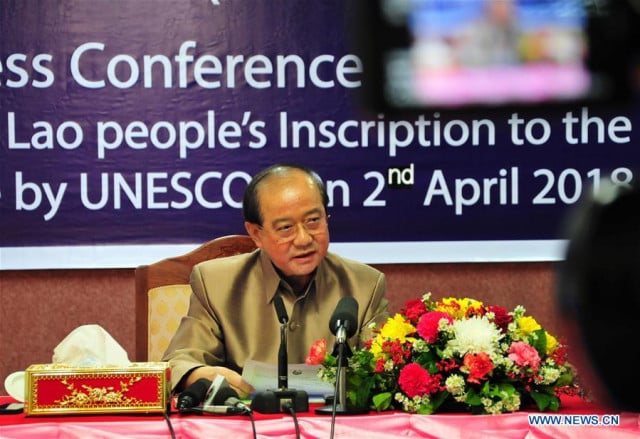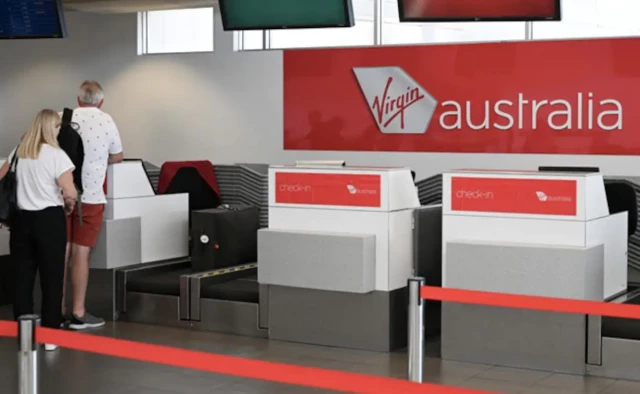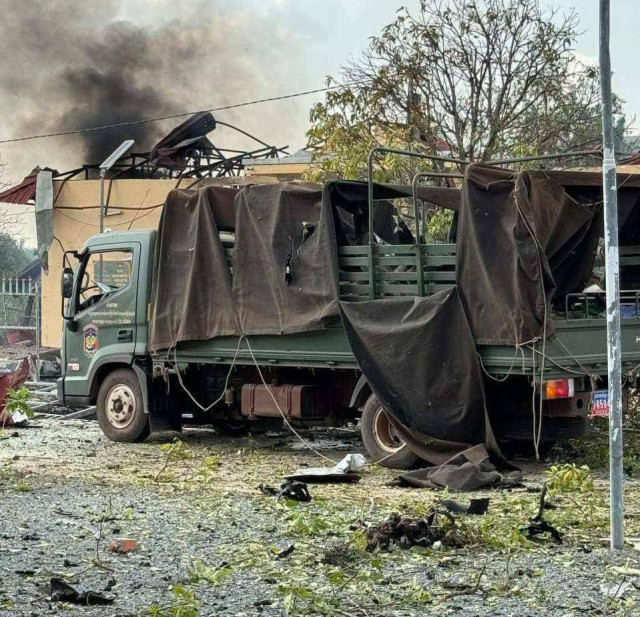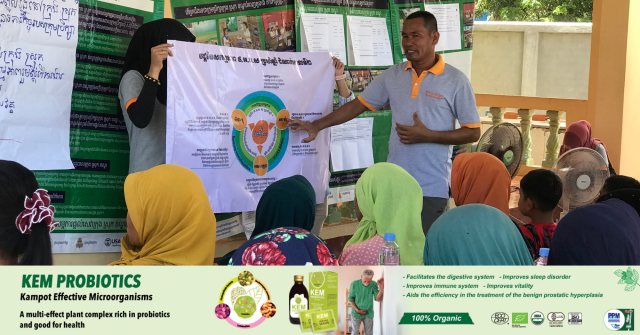SSEAYP: Applying for this ASEAN/Japan Exchange Program
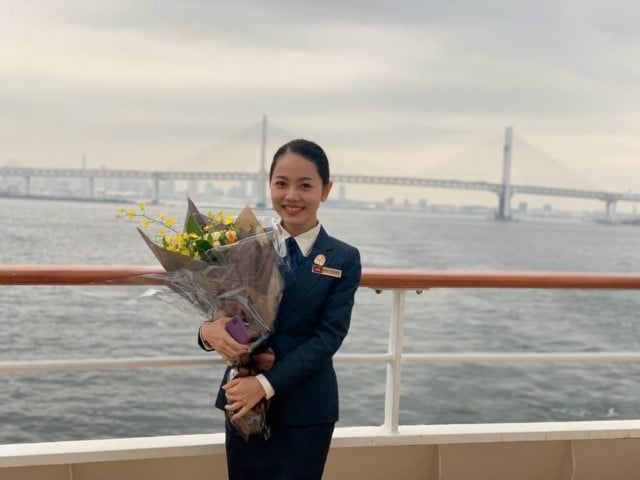
- Ky Chamna
- May 21, 2020 3:30 AM
Sokun Sophakreasey, who headed the Cambodian group last year, explains how to prepare and what to expect
Have you ever dreamt of traveling on a ship across the sea? Or of spending time with young people from 10 other countries? And then visit five countries in a row?
The Ship for Southeast Asian and Japanese Youth Program (SSEAYP) is an annual exchange program, which is held by the 10 ASEAN countries and Japan. Each year, 29 representatives from each of the 11 countries spend time together on a ship with the aim of promoting mutual understanding and cultural exchange in the region.
Cambodianess’ Ky Chamna recently interviewed Sokun Sophakreasey, the leader of the 2019 Cambodian SSEAYP contingent, to get a glimpse as to what this exchange program is like and how interested candidates should prepare before applying for it.
 SSEAYP’s participants display the Cambodian flag during a performance on board the Nippon Maru ship last November. Photo Supplied
SSEAYP’s participants display the Cambodian flag during a performance on board the Nippon Maru ship last November. Photo Supplied
Ky Chamna: With this program involving five months of pre-departure training, time on the ship and visiting five countries in a row, how should candidates prepare to apply as Participating Youths (PYs)?
Sokun Sophakreasey: The very first thing that every interested candidate should do is to do some research on the program to understand the requirements for eligibility. Not all the information is available on the internet. So, if you are truly interested in the program, you should check the “SSEAYP International Cambodia” Facebook page, look at YouTube videos posted by pervious PYs, or even try asking someone…who has actually been in the program. If you are pursuing studies, work or a project, it is better for a candidate to plan his/her schedule carefully not to overlap with the program’s timetable, before becoming a PY. Another important thing is to get permission from your family. Before you decide to join, make sure that you have confirmed this with your family members. Also, make sure that you have worked on your English skills for the entry examination and the interview, as well as broaden your understanding of ASEAN and the world. Plus, don’t forget to join our “sharing” session to know more about the program.
Ky Chamna: After being selected as a participating youth, what are the steps that a PY should expect?
Sokun Sophakreasey: After being selected as final candidates, PYs will devote a great deal of time to pre-departure training. A training that involves testing your mental and physical abilities, which is conducted in Phnom Penh and some other provinces in the form of a camping trip. Apart from physical training, PYs have the honor of being invited for a courtesy call on Prime Minister Hun Sen and many other Cambodian ministries. PYs are also expected to learn and perform various cultural performances, flag salutes, contingent salutes and other coordinated demonstrations to showcase our national heritage, both in Cambodia and abroad. Each PY will also be given multiple sets of official attires, which will be worn during formal meetings and the filming of the introductory video—a short video that introduces the selected PYs. Because of these integrated works [to be performed by] the 28 selected candidates, the team is divided into smaller groups. These smaller groups are tasked with different duties such as seeking sponsorships, formulating ideas for the performances, or strengthening the team’s code of conduct.
Ky Chamna: After the pre-departure training comes the voyage that everyone is waiting for. What are the activities that are conducted on board the ship as well as during the ports of call?
Sokun Sophakreasey: During the exchange program, PYs will be experiencing two main types of activities. The first type consists of the activities that take place on board the ship. The second type is comprised of activities conducted on land at every port of call. First of all, on the ship, PYs are assigned to spend time with the other nationalities. They may start their day by doing some morning exercises and attending the mandatory morning assembly to record their attendance and receive news or announcements. According to the schedule, PYs will spend some parts of their day in discussion groups that are coordinated by facilitators from ASEAN and Japan. Discussion groups bring to PYs’ attention current global issues and progresses such as education, disaster risk reduction, youth entrepreneurship and more. Discussion groups involve lectures and field studies. Solidarity Group activity, which is another important onboard activity, enables PYs from all 11 countries to bond with one another through games and exciting icebreakers. Voluntary activities are when PYs come up with their own ideas and invite other PYs to participate. These activities can be dancing, playing music, storytelling or even small workshops in which ideas are shared. National Presentations are the official cultural performances that each team from the 11 countries performs on the ship. Apart from that, PYs can spend their breaks enjoying the beauty of the ocean, the sunset and the stars in the night sky.
At every port of call, PYs will perform flag ceremonies during embarkation or disembarkation of the ship, be invited to the Welcoming Ceremonies hosted by the port-of-call countries, visit various institutions according to the discussion-program themes and, most importantly, the homestay program. Homestay program is when you spend time with host families, going around cities and areas in the different countries for several days as a way of learning their cultures, traditions and lifestyles.
 The SSEAYP’s Cambodian participants pose in Khmer traditional attire on the Nippon Maru deck. Photo Supplied
The SSEAYP’s Cambodian participants pose in Khmer traditional attire on the Nippon Maru deck. Photo Supplied
Ky Chamna: Based on your own experience, what are the obstacles that PYs usually face?
Sokun Sophakreasey: Punctuality and schedule management are some of the obstacles that PYs usually face. Timing is extremely important for this program. If they prepare their schedule well enough before becoming PYs, then this will not be much of a problem. Another thing is the family issue. If their families understand well the program and they are okay with it from the beginning, then everything will proceed smoothly. Accepting the new routine is also an obstacle for many PYs. The routine during the pre-departure training and while onboard the ship is very different. The thing is that you have to work with 28 other candidates you have not known before, spend almost 24 hours a day with them and almost seven days a week. Sometimes, you cannot get home early to eat or rest well. It’s hard to explain, but it’s like a new life for the candidates. Other common obstacles are seasickness and homesickness. About half of the team will experience seasickness.
Ky Chamna: From your personal perspective, having completed this exchange program, how does it shape a PY’s mindset?
Sokun Sophakreasey: One important point is that I believe this program will make PYs become more patriotic. I am not saying that other people beside PYs are not patriotic. They can be very patriotic as well. However, once you become a PY, you can see how other candidates get to represent themselves and represent their countries. At the same time, you’ll feel that you want to do the best for your team and for your country.
Ky Chamna: Does the program also shape the PYs’ personality?
Sokun Sophakreasey: In terms of personality, this program will more or less train you to be a bit more extroverted. No matter how introverted you are, all the activities and the things you have to do onboard the ship will lead you, more or less, to be a bit more extroverted. PYs will also feel more independent. Nevertheless, the experience that a PY gets out of the program depends a lot on his/her age and the experience he/she already had. Apart from this, you also get to understand ASEAN and Japan’s perspective. With different nationalities, you can get to know more about cultural differences and cultural diversity. Depending on the PYs, after coming back from the program, they might be more aware in terms of punctuality. What you’ll get out of it depends on your own willingness to learn.
Ky Chamna: As a former national leader of the Cambodian contingent, what do you want the future PYs to know personally?
Sokun Sophakreasey: I want the interested candidates to understand more about the program before applying. At least to have the right expectations for themselves. Some expect too much from the program while others have no expectation at all. This would come as a surprise for many of them. I want them to know that this is a once-in-a-lifetime experience and it is a chance for you to represent yourself and your country.
 Members of the 2019 SSEAYP exchange program are received by Japanese Prime Minister Shinzo Abe last October. Photo Supplied
Members of the 2019 SSEAYP exchange program are received by Japanese Prime Minister Shinzo Abe last October. Photo Supplied






